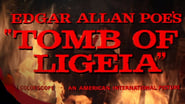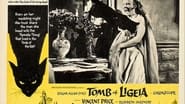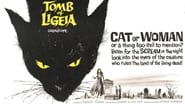SnoReptilePlenty
Memorable, crazy movie
Moustroll
Good movie but grossly overrated
Lidia Draper
Great example of an old-fashioned, pure-at-heart escapist event movie that doesn't pretend to be anything that it's not and has boat loads of fun being its own ludicrous self.
Guillelmina
The film's masterful storytelling did its job. The message was clear. No need to overdo.
tomgillespie2002
The films that immediately come to mind when considering Roger Corman's considerable cycle of Edgar Allen Poe adaptations are undoubtedly titles such as The Fall of the House of Usher (1960) and The Pit and The Pendulum (1961), both starring Vincent Price as a man psychologically torn by a past event or his looming fate, and both featuring the Gothic, set-based atmosphere that is now so celebrated by movie fans. The Tomb of Ligeia may be one of Martin Scorsese's all- time favourite horror movies, but it has been strangely, and unfairly, overlooked in the horror cannon.Price once again plays a man, Verden Fell, haunted by the death of his wife. While out fox-hunting one day, the young and boisterous Lady Rowena (Elizabeth Shepherd) comes across Verden in a graveyard, apparently looming over the grave of his wife, the mysterious Ligeia, and forced to wear protective glasses due to his failing eye sight. Rowena takes pity on him, and witnesses his psychological torment first hand, which is mainly due to the presence of a threatening cat and the idea that his dead wife is haunting him from the grave. The two eventually marry, but Rowena finds herself the subject of increasingly strange goings-on.Ligeia is noticeably different to the other entries into the Corman- Poe cycle, mainly due to it's use of exterior filming. While this causes it to lose the claustrophobic, and beautiful, sets of the likes of Usher and Pendulum, it makes for a spookier atmosphere. Price is excellent as always, as is Shepherd, but the blooming romance between their two characters suffers from a distinct lack of chemistry and the niggling problem of the glaring age-gap. However, Ligeia was written by Chinatown (1974) scribe and all-round Hollywood titan Robert Towne, so the absorbing dialogue more than makes up for the awkwardness between the two leads. Certainly a different experience, but Ligeia is up there with the very best of Corman's output.www.the-wrath-of-blog.blogspot.com
gavin6942
Verden Fell (Vincent Price) was married to a demon woman, Ligeia, and even after death she haunts him. When he takes a new wife, Rowena, things quickly go very badly for both of them as Ligeia begins to possess Fell's new love.This was the last of Roger Corman's "Poe" series, and although considered his best by some, I found it highly lackluster. Perhaps it is because Richard Matheson was not responsible for the script? I do not know, but as good as this one was, it just fell short for me.Vincent Price is, of course, good as always. Is he ever less than the best? But the credit here should go to Elizabeth Shepherd, who played both Ligeia and Rowena. I honestly could not tell they were the same actress until the credits, and that says something for the makeup department, but also Shepherd's ability to command range of personality within a single film. She deserves to be better known.Ivan Butler shares my sense of doubt when he says the film is "a falling off from its predecessor" and "the epic sense of grandeur and doom may be missing". He goes on to praise the film, more so for its deep psychological implications and what he sees as an homage to Cocteau.Howard Thompson in the New York Times of May 6, 1965 wrote that "these low-budget shockers generally evoke a compelling sense of heady atmosphere and coiled doom in their excellent Gothic settings, arresting color schemes and camera mobility... Mr. Corman has made stunning, ambient use of his authentic setting, an ancient abbey in Norfolk, England, and the lovely countryside. The picture is not nearly as finished as Masque of the Red Death... But the Corman climate of evil is as unhealthy and contagious as ever." That sums up the film in a manner far better than I could.
matheusmarchetti
"Tomb of Ligeia" was the last of Corman's popular Edgar Allan Poe adaptations of the 60's. Because of how it's totally different in style from the previous entries in the series, many have deemed it as an inferior effort, though I personally think it's the total opposite. There's no doubt in my view that "Ligeia" is Corman's finest Poe adaptation. All the flaws present in his earlier films (even in the more well praised "Masque of the Red Death"), that have become even more visible with aging, have served as a lesson as to what not to do, and are thankfully not present here. The most effective change was the change of setting. Instead of using painted backdrops posing and excessive sound stage interiors posing as European settings, this one was actually filmed on-location in the British countryside, with studio indoors scenes kept to a minimum. The gorgeously photographed exterior locations, with the dark and imposing ruins clashing against the peaceful, idyllic nature surroundings, add immensely to the film's brooding Gothic atmosphere, and it's a real shame it wasn't used more often in other films of the same period. Not since Jean Epstein's haunting "Fall of the House of Usher" in 1928, has Poe's style been so faithfully adapted to the silver screen. This is mostly due to Corman's stylish and original direction, an intelligent script by Robert Towne (of "Chinatown" fame) and to Vincent Price's acting. Without resorting to over-the-top melodramatic gestures (as seen in 1961's "Pit and the Pendulum"), Price plays to perfection a suave, mysterious, eerily seductive and haunted lead - the ultimate Poe lead, and one of his best performances, up there with his work in "Witchfinder General". Elizabeth Sheppard, whom you might remember as the doomed journalist from "Damien: Omen II", is equally effective as the female lead, both as Ligeia and Lady Rowena. As Rowena, Sheppard doesn't go for your typical 'damsel in distress' performance as it could've been, and plays as a much stronger willed, not so innocent, independent, yet likable character. Though her role as creepy raven-haired Ligeia has less screen time, she does manage to leave an impression, and manages to be genuinely creepy. Another bonus is the surreal dream sequence that happens somewhere in the middle of the film. A trademark Corman treat, this scene is filled with vivid colors, brilliantly otherworldly camera-work and bizarre, nightmarish imagery, it's one of the film's scariest moments, and also one of the director's most memorable set pieces. Also, I love the subtly creepy and disturbingly poetic approach Towne and Corman take at the controversial necrophilia subplot. This subject matter would get an equally elegant treatment 10 years later in Mario Bava's "Lisa and the Devil". The film's flaws come basically from the final confrontation between Price and Sheppard, which comes back as a more typical Corman-ending-to-a-Poe-film, coming off as a bit anti-climatic, considering how much build up there was it. Nevertheless, it's fun and stylish, even if it's slightly campy tone doesn't match the otherwise seriousness of all that came after. Overall, an exquisite Gothic gem from the 60's, and essential viewing for fans of the genre. Even if you're not a fan of the director's work, do check it out, as it might as well come off as a pleasant surprise. 9.5/10
JoeytheBrit
I suppose this is as much psychological thriller as horror by modern standards, given that there is no real horror - either physical or mental - to speak of. Price is the husband of Ligeia, the woman who loved life so much she refused to accept her own death when it became inevitable and swore she would always be his wife. Given baggage like this, the fact that he wanders around in shades that would be cool today but that are decidedly odd for Victorian England and lives in a cobwebby old abbey it's a bit of a surprise that Lady Rowena falls for him so quickly. Mind you, he does attempt to kill the cat that has clawed her with a cabbage, so he obviously has some good points (I know that sentence doesn't read correctly but it's late and I can't be bothered to re-write. Just take it as read that Tiddles didn't claw her with a cabbage, OK? Thanks).Frivolity aside - and the more films I see the more inclined I am to be frivolous about them - Roger Corman's final Poe adaptation is quite handsomely mounted considering its modest budget. It's plot unfolds at a stately pace typical of the era in which it was filmed (which means the majority of people under 25 will find it too difficult to stick with). Price is about 15 years too old for his role but gives a pretty good account of himself, while Elisabeth Shepherd manages to keep the annoyance quotient of her character down to a manageable level.One point I was curious about was what was going on in that opulently furnished hall behind the mirror. Ligeia lying on that bed in her black nightgown, her arms extended as if to greet a lover - or to beseech his return. Was Corman really suggesting necrophilia?







